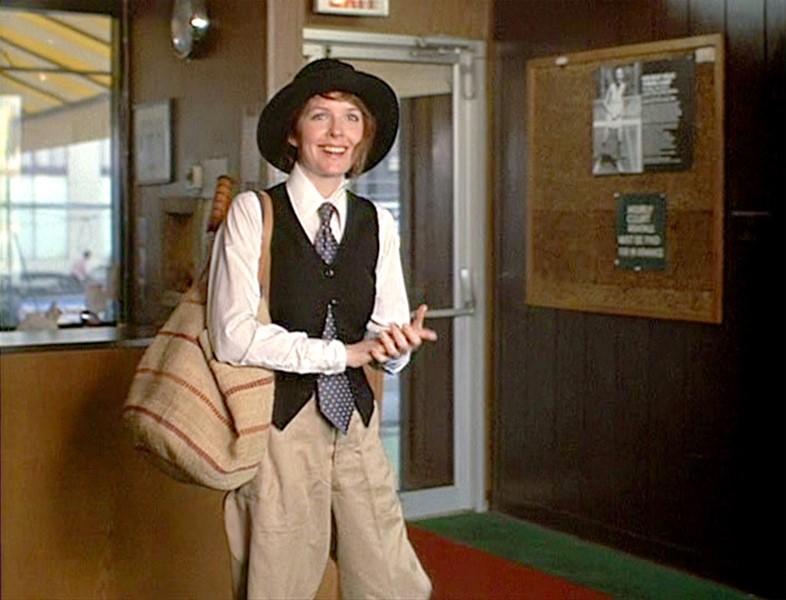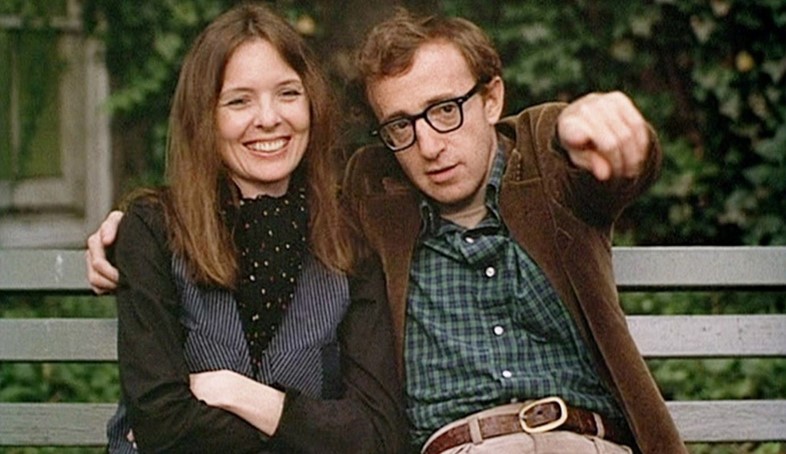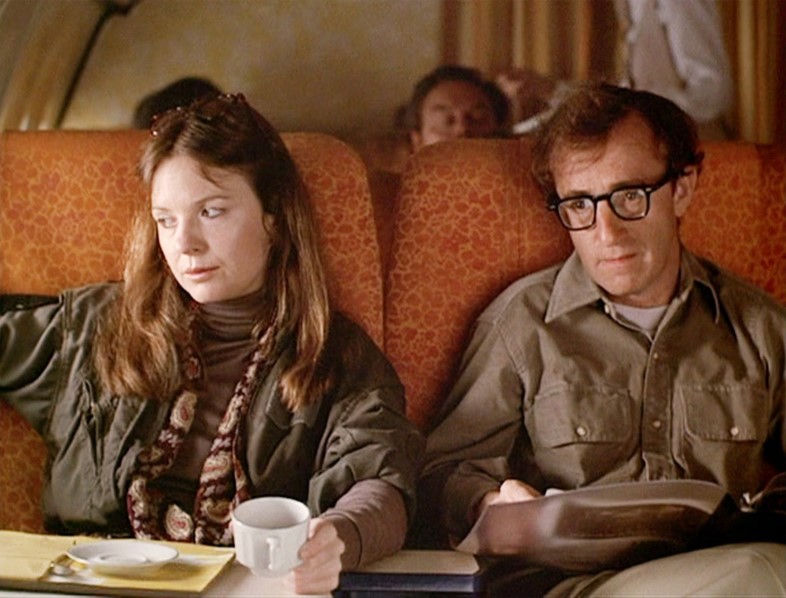From androgynous trend-setting to a celebration of intellectual prowess, we take notes from cinema’s greatest rom-com heroine
“I would never want to belong to any club that would have someone like me for a member,” quips Alvy “Max” Singer, paraphrasing either Groucho Marx or Freud’s Wit and Its Relation To The Unconscious in the opening monologue of Annie Hall, and setting the psychoanalytic mood and sense of wry self-loathing that is pervasive throughout the film’s entirety. Stand-up comic Alvy, played by Woody Allen himself in a clear act of self-parody, embarks upon a stream-of-consciousness journey through his failed relationship with the whimsical yet (almost) equally neurotic Annie Hall; a character executed faultlessly by Diane Keaton, in a role that was specifically created to be played by her and her alone.
And it’s easy to understand why this is; for despite the immaculately written screenplay, without Keaton’s presence it’s doubtful that Annie Hall would have reached such monumental status in the history books of both cinema and fashion alike. Earning a Best Actress Oscar and lifetime status as an icon of androgynous style within contemporary dress, Diane’s radical sartorial statements set in motion a global trend for the ‘Annie Hall Look’. Consequently, she became emblematic of the 1970s woman who was in the midst of constructing her own strong identity at a time of political revolution – and Annie’s symbolic status is one that has held steadfast to this day.

1. Borrow from Ralph Lauren
An up-and-coming talent at the time of the film’s production, Lauren was responsible for providing Keaton with some of his designs for her role as Annie – notably, the patterned tie that was to be imagined as “a present from Grammy Hall”. Needless to say, sales in the Ralph Lauren brand spiked upon the film’s release and, fast-forward to 2016, the designer is set to receive an Outstanding Achievement accolade at The Fashion Awards next month for his vast and continued contributions to fashion and philanthropy. Remaining a firm supporter of Annie’s position as a figure of inspiration for the modern woman (and perhaps as a nod of gratitude for her part in the development of his career) he paid homage to Ms. Hall in his A/W16 collection via textures of tweed, taupe-hued tailoring layered over mannish knitwear and, of course, the iconic waistcoat and tie combination that he assisted in creating back in 1977.

2. Sartorially self-direct
Annie Hall was never envisioned to be a fashion icon. Despite a small helping hand from Ralph and costume stylist Ruth Morley, her ensembles mostly consisted of Diane Keaton’s own clothes. However, the path to a signature Annie look wasn’t an easy one, and her wardrobe choices were met with a certain air of derision on set from particular members of the crew. But as Allen quite rightly recognised, “She's a genius! Let's just leave her alone, let her wear what she wants.” And so they did, with Diane’s self-directed style now widely recognised as the moment androgynous dress was unleashed into the mainstream in a flurry of ties, shirts, waistcoats and high-waisted, wide-leg trousers. Indeed, there have been several instances in fashion history synonymous with the ‘menswear as womenswear’ phenomenon: Katherine Hepburn was once asked if she had ever owned a skirt and Yves Saint Laurent’s groundbreaking 1966 creation Le Smoking tuxedoes will never be forgotten. But the presence of masculine silhouettes on women in contemporary fashion can also be greatly attributed to Annie’s unwavering conviction in her own sense of style.

3. Use eyewear as a symbol for intellectual prowess
A celebration of New York and its self-conscious intellectual climate, Annie Hall is full of academic and cultural references: from the description of Alvy’s first wife Carol as the “New York Jewish, left-wing, liberal intellectual, Central Park West, Brandeis University, the socialist summer camps and the father with the Ben Shahn drawings,” to a sexual encounter described as “a Kafkaesque experience” and the scene where Annie and Alvy stand in line at the cinema, having to endure the musings of a media professor pontificating about Marshall McLuhan. Naturally, most characters in the film seem to be suffering from some form of myopia in one way or another, and a plethora of thick-rimmed spectacles help to create a bookish mood, with Annie’s own lenses ranging from owl-like librarian to a signature 1970s faded tint through which to view the world.

4. Embrace a multitude of adornments
Alongside a general penchant for layering (think oversized tweed blazers worn over gigantic swathes of skirts, checked shirts buttoned over polo necks, and a consistent mish-mash of proportions), Annie Hall is never without at least one accessory per look. Felt bowler hats, bijoux scarves nonchalantly thrown round her neck – or tied deftly to perfection – and raffia handbags no doubt containing the many books on the acceptance of death bought for her by Alvy, all embellish her iconic ensembles. A particularly notable detail however, is the carnation – or boutonnière – adorning the lapel of her jacket during her performance of Seems Like Old Times, a playful and subtly camp subversion of a classic masculine style trope.
